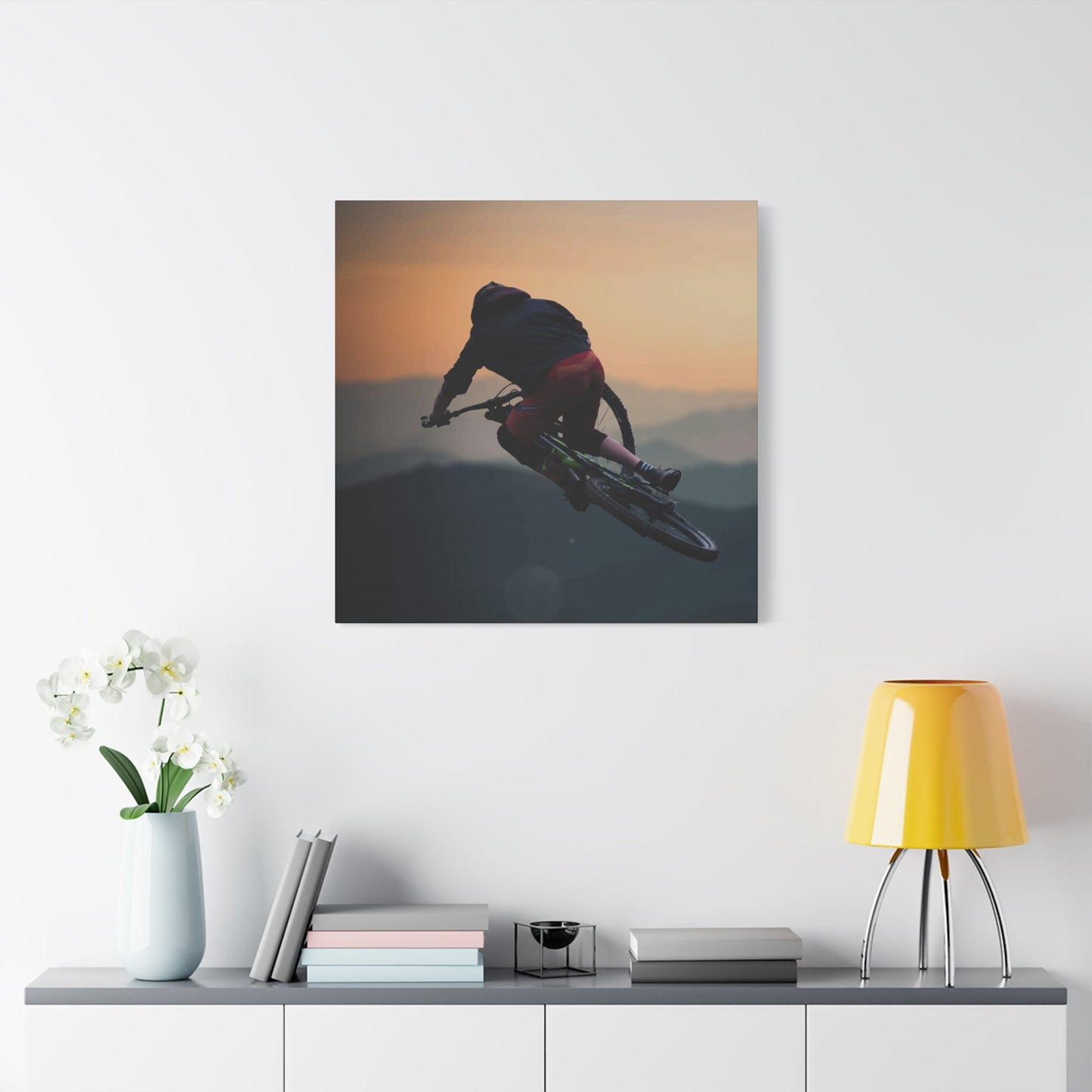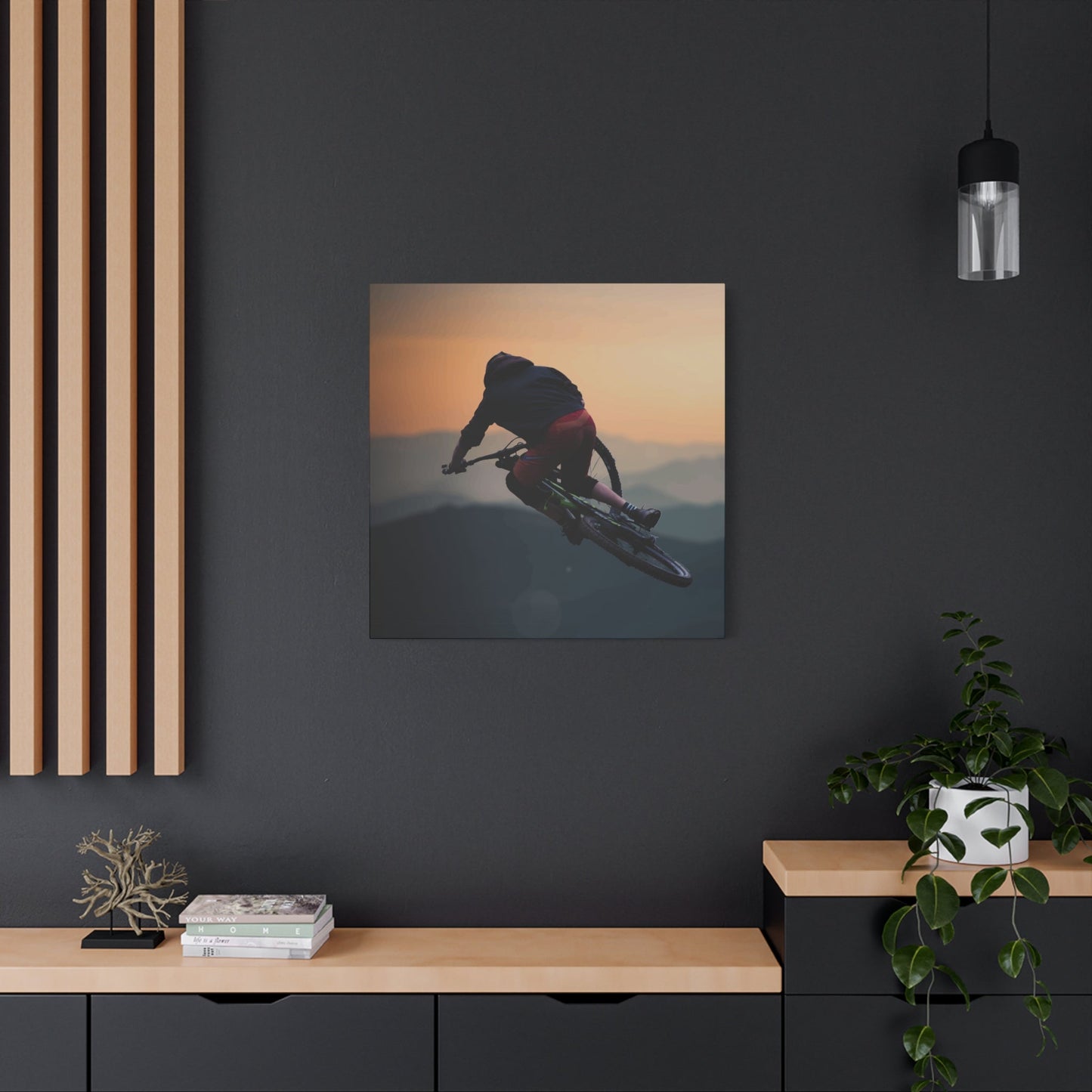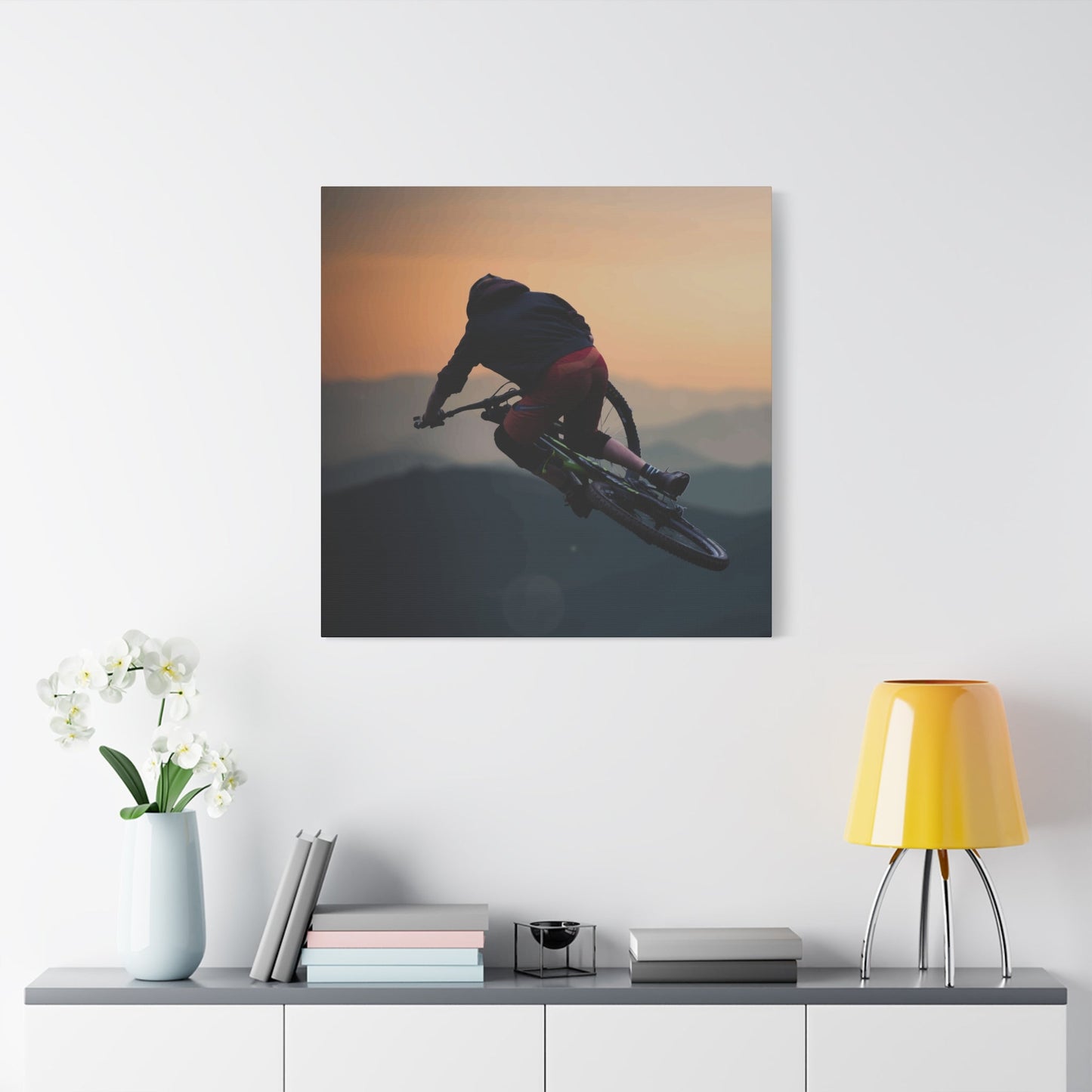Innovative Bike Wall Display: Artistic Storage Solutions for Every Home
Cycling enthusiasts worldwide face a common challenge: how to store their beloved bicycles while maintaining an aesthetically pleasing living environment. The solution lies in transforming functional storage into artistic displays that celebrate the beauty of bicycle design. Wall-mounted bicycle displays have emerged as a sophisticated approach to home organization, combining practicality with visual appeal. This comprehensive exploration delves into numerous creative approaches for incorporating bicycles into interior design schemes, offering solutions for various living situations and personal preferences.
The concept of displaying bicycles as wall art represents a paradigm shift in how we view both storage and decoration. Rather than hiding these mechanical marvels in cluttered garages or cramped closets, forward-thinking homeowners are embracing their bicycles as sculptural elements that enhance their living spaces. This approach acknowledges the inherent beauty in bicycle engineering while addressing practical storage concerns in an increasingly space-conscious world.
Bicycle Wall Art Mounting Concepts
The foundation of any successful bicycle wall display begins with understanding the various mounting concepts available to homeowners. These concepts range from simple hook systems to elaborate custom installations that rival professional gallery displays. The key to successful bicycle wall mounting lies in balancing aesthetic appeal with structural integrity, ensuring that your chosen system can safely support the weight of your bicycle while contributing to the overall design scheme of your space.
Professional-grade mounting systems have evolved significantly in recent years, incorporating advanced materials and engineering principles borrowed from industrial applications. These systems often feature powder-coated steel construction, precision-machined components, and innovative weight distribution mechanisms that ensure long-term reliability. The aesthetic considerations are equally important, with many modern mounting systems designed to complement contemporary interior design trends while maintaining their functional effectiveness.
The selection of appropriate mounting hardware depends heavily on wall construction, bicycle weight, and intended frequency of use. Load-bearing considerations become particularly critical when mounting heavier bicycles such as electric bikes or full-suspension mountain bikes. Professional installation may be advisable for valuable bicycles or in situations where wall integrity is uncertain. The investment in proper mounting infrastructure pays dividends in both safety and aesthetic appeal over the long term.
Modular mounting systems offer exceptional versatility for households with multiple bicycles or changing display needs. These systems typically incorporate standardized mounting points that can accommodate various bicycle types and sizes while maintaining visual coherence across the installation. The modular approach also facilitates future expansion or reconfiguration without requiring complete system replacement.
Wall-Mounted Bicycle Display Solutions
Contemporary wall-mounted bicycle display solutions encompass a broad spectrum of approaches, from minimalist single-bicycle installations to complex multi-bicycle arrangements that serve as focal points in residential and commercial spaces. The most effective solutions seamlessly integrate storage functionality with aesthetic enhancement, creating displays that celebrate the mechanical artistry inherent in bicycle design while serving practical storage needs.
Horizontal mounting solutions represent one of the most popular approaches to bicycle wall display, particularly for homes with ample wall space and standard ceiling heights. These systems typically suspend the bicycle parallel to the floor, creating a clean, streamlined appearance that works well with contemporary interior design schemes. The horizontal approach also facilitates easy bicycle access while minimizing the visual impact of the mounting hardware.
Vertical mounting solutions offer compelling advantages for spaces with limited wall width but adequate ceiling height. These systems orient the bicycle perpendicular to the floor, creating striking vertical elements that can serve as room dividers or accent features. Vertical mounting often requires less overall wall space while creating dramatic visual impact, making it particularly suitable for urban apartments and loft-style living spaces.
Angular mounting approaches combine elements of both horizontal and vertical orientations, creating dynamic displays that emphasize the bicycle's geometric beauty. These systems often position bicycles at carefully calculated angles that optimize both visual appeal and space utilization. The angular approach can create compelling shadow patterns and visual rhythms, particularly when multiple bicycles are displayed in coordinated arrangements.
The integration of lighting elements into bicycle display solutions can dramatically enhance their visual impact and functionality. LED strip lighting, track lighting, or specialized accent fixtures can highlight the bicycle's design details while providing practical illumination for the surrounding space. Smart lighting systems can even incorporate programmable sequences that create dynamic displays suitable for entertaining or special occasions.
Creative Bicycle Wall Art Mounting Systems
Innovation in bicycle wall mounting has produced numerous creative solutions that push the boundaries of traditional storage concepts. These creative systems often incorporate artistic elements, unconventional materials, or novel mechanical approaches that elevate bicycle storage from mere practicality to genuine artistic expression. The most successful creative mounting systems maintain their fundamental functionality while introducing unexpected visual elements that surprise and delight viewers.
Sculptural mounting systems treat the bicycle and its support structure as integrated artistic installations. These approaches often involve custom metalwork, artistic welding, or the incorporation of found objects that complement the bicycle's aesthetic while providing robust structural support. Sculptural mounting systems work particularly well in spaces with industrial or artistic design themes, where the mounting hardware becomes an integral part of the overall aesthetic statement.
Floating mount systems create the illusion that bicycles are suspended without visible support, achieved through carefully concealed mounting hardware and strategic weight distribution. These systems require precision engineering and professional installation but create stunning visual effects that make bicycles appear to hover effortlessly on the wall. The floating effect works particularly well with modern and minimalist interior design schemes.
Interactive mounting systems incorporate moveable elements that allow for dynamic repositioning of bicycles without removing them from their wall-mounted positions. These systems might include rotating mechanisms, sliding tracks, or articulating arms that transform the bicycle display from static installation to interactive sculptural element. Interactive systems are particularly appealing in spaces used for entertainment or education.
Geometric mounting systems organize multiple bicycles into carefully planned geometric patterns that create compelling visual rhythms and spatial relationships. These systems often incorporate mathematical principles such as the golden ratio or Fibonacci sequences to create naturally pleasing arrangements. Geometric systems work exceptionally well in commercial spaces or large residential areas where multiple bicycles can be displayed simultaneously.
Bicycle Storage Meets Artistic Expression
The convergence of storage functionality and artistic expression represents one of the most exciting developments in contemporary bicycle display solutions. This approach recognizes that practical storage needs not conflict with aesthetic aspirations, instead creating opportunities for innovative solutions that enhance both functionality and visual appeal. The most successful implementations seamlessly blend storage efficiency with artistic merit, creating installations that serve multiple purposes while contributing to the overall design narrative of the space.
Material selection plays a crucial role in achieving successful integration of storage and artistic expression. High-quality materials such as stainless steel, aircraft aluminum, or precision-machined brass can elevate simple storage solutions into sophisticated artistic statements. The choice of materials should complement both the bicycle's construction and the surrounding interior design elements, creating cohesive visual relationships that enhance the overall aesthetic impact.
Color coordination between mounting systems and bicycles creates opportunities for sophisticated artistic statements that celebrate both functional and aesthetic considerations. Monochromatic approaches can create subtle, elegant displays that emphasize form and proportion, while contrasting color schemes can create bold, attention-grabbing installations that serve as focal points within larger design schemes.
Texture relationships between mounting hardware and bicycle components can create compelling tactile and visual contrasts that enhance the overall artistic impact of the installation. Smooth, polished mounting systems can emphasize the mechanical precision of bicycle components, while textured or patinated surfaces can create interesting juxtapositions that highlight the interplay between manufactured and natural elements.
The incorporation of complementary artistic elements such as photography, painting, or sculptural objects can create comprehensive installations that celebrate cycling culture while serving practical storage needs. These integrated approaches often tell stories about personal cycling experiences, local cycling culture, or the historical development of bicycle technology.
Modern Bicycle Wall Mount Design Principles
Contemporary bicycle wall mount designs reflect broader trends in industrial design, incorporating principles of minimalism, functionality, and sustainable materials. Modern mounting systems prioritize clean lines, efficient use of materials, and integration with smart home technologies. These design principles create mounting solutions that complement contemporary interior design while providing robust, reliable bicycle storage.
Minimalist design approaches emphasize the bicycle itself rather than the mounting hardware, creating clean, uncluttered displays that allow the bicycle's inherent beauty to take center stage. These systems often employ nearly invisible mounting hardware or integrate mounting elements so seamlessly into the wall that they become virtually undetectable when not in use.
Sustainable design considerations have become increasingly important in modern mounting system development, with many manufacturers incorporating recycled materials, renewable resources, or environmentally responsible manufacturing processes. These sustainable approaches often result in mounting systems with unique aesthetic characteristics that reflect their environmental consciousness.
Smart technology integration allows modern mounting systems to incorporate features such as security monitoring, usage tracking, or automated positioning adjustments. These technological enhancements can provide valuable data about bicycle usage patterns while offering conveniences such as remote monitoring or automated theft deterrent systems.
Modular design principles enable modern mounting systems to adapt to changing needs without requiring complete replacement. These systems often incorporate standardized components that can be reconfigured, expanded, or modified to accommodate different bicycles or evolving aesthetic preferences. The modular approach also facilitates cost-effective upgrades and modifications over time.
Bicycle Wall Art for Compact Living Spaces
Small living spaces present unique challenges and opportunities for bicycle wall display solutions. Limited square footage requires creative approaches that maximize vertical space utilization while maintaining aesthetic appeal and practical functionality. The most successful small-space solutions often incorporate multi-functional elements that serve storage, display, and other practical purposes simultaneously.
Vertical space optimization becomes critical in compact living environments, where floor space is at a premium. Wall-mounted systems that extend from floor to ceiling can accommodate multiple bicycles while creating striking vertical elements that actually make spaces appear larger. These tall, narrow installations work particularly well in loft-style apartments or rooms with high ceilings.
Multi-functional mounting systems serve double or triple duty in small spaces, incorporating features such as shelving, hooks for cycling accessories, or integrated seating elements. These comprehensive solutions maximize the utility derived from each square foot of wall space while maintaining clean, organized appearances that prevent small spaces from appearing cluttered.
Folding or retractable mounting systems allow bicycles to be displayed when desired and concealed when additional space is needed. These systems are particularly valuable in studio apartments or multi-purpose rooms where space requirements change throughout the day. The ability to quickly reconfigure the space provides flexibility that is essential in compact living situations.
Corner mounting solutions take advantage of often-underutilized corner spaces to provide bicycle storage without impacting main circulation areas. These systems can transform awkward corner spaces into functional storage areas while creating interesting geometric relationships between walls, bicycles, and surrounding furnishings.
Sophisticated Bicycle Display Solutions for Walls
Sophisticated bicycle wall displays transcend basic storage to create compelling artistic installations that serve as focal points within interior design schemes. These advanced solutions often incorporate custom elements, professional-grade materials, and refined aesthetic principles that rival museum-quality installations. The investment in sophisticated display solutions reflects a deep appreciation for bicycle design and a commitment to celebrating cycling culture within the home environment.
Museum-quality mounting systems incorporate conservation principles that protect valuable bicycles while displaying them to maximum advantage. These systems often include features such as UV-resistant lighting, climate monitoring, or protective barriers that preserve bicycle components while allowing full appreciation of their design and construction details.
Custom fabrication allows for display solutions tailored to specific bicycles, spaces, and aesthetic preferences. Custom systems can incorporate unique materials, specialized mounting approaches, or integrated technological features that create one-of-a-kind installations. The custom approach ensures perfect integration with existing interior design while addressing specific functional requirements.
Professional lighting design can dramatically enhance sophisticated bicycle displays, creating dramatic shadow patterns, highlighting specific design details, or creating dynamic lighting sequences for special occasions. Professional lighting systems often incorporate multiple fixture types, sophisticated control systems, and energy-efficient LED technologies that provide years of maintenance-free operation.
Integrated storage solutions accompany sophisticated bicycle displays with coordinated storage for cycling accessories, maintenance equipment, or related memorabilia. These comprehensive systems create complete cycling environments that celebrate all aspects of cycling culture while maintaining organized, attractive appearances.
Wall-Mounted Bicycle Art for Living Areas
Living room bicycle displays require particular sensitivity to interior design principles, as these spaces serve multiple functions and must accommodate diverse aesthetic preferences. The most successful living room installations balance the mechanical beauty of bicycles with the comfort and elegance expected in primary living spaces. These solutions often emphasize the sculptural qualities of bicycles while ensuring they complement rather than dominate the surrounding decor.
Scale relationships become particularly important in living room installations, where bicycle displays must coexist with furniture, artwork, and other decorative elements. Proper scale relationships ensure that bicycle displays enhance rather than overwhelm the space while creating pleasing visual proportions that contribute to overall room harmony.
Color integration strategies help bicycle displays blend seamlessly with existing living room color schemes or create intentional accent points that enliven neutral palettes. These strategies might involve selecting bicycles in colors that complement the room's palette or incorporating mounting hardware that bridges between bicycle and room colors.
Seasonal display modifications allow living room bicycle installations to evolve with changing decorative themes or seasonal preferences. Removable elements, adjustable lighting, or modular components can transform bicycle displays to complement holiday decorations, seasonal color changes, or evolving interior design preferences.
Conversation piece potential makes living room bicycle displays excellent focal points for social gatherings, providing natural conversation starters that can share cycling experiences or bicycle history. Well-designed displays often incorporate information plaques, historical context, or interactive elements that engage visitors and celebrate cycling culture.
Bicycle Mounting Solutions for Interior Design
The integration of bicycle mounting solutions into comprehensive interior design schemes requires careful consideration of spatial relationships, material coordination, and aesthetic coherence. Successful integration treats bicycle displays as integral design elements rather than afterthoughts, ensuring they contribute meaningfully to the overall design narrative while serving practical storage functions.
Design style compatibility ensures that bicycle mounting solutions complement rather than conflict with existing interior design themes. Contemporary mounting systems can enhance modern and minimalist spaces, while more ornate or traditional mounting approaches might better suit classical or eclectic design schemes. The key lies in understanding the underlying principles of the chosen design style and selecting mounting solutions that reinforce those principles.
Material harmony between mounting systems and existing interior elements creates visual coherence that strengthens the overall design impact. Coordinating mounting system materials with furniture hardware, lighting fixtures, or architectural details creates sophisticated relationships that demonstrate design sophistication and attention to detail.
Spatial flow considerations ensure that bicycle displays enhance rather than impede movement through interior spaces. Well-planned installations maintain clear circulation paths while creating interesting visual experiences that guide occupants through the space. The relationship between bicycle displays and furniture arrangements requires careful planning to optimize both functionality and aesthetic appeal.
Lighting integration strategies coordinate bicycle display illumination with ambient and task lighting systems to create cohesive lighting environments. These strategies might involve incorporating bicycle displays into existing lighting circuits or designing dedicated lighting systems that highlight bicycle displays while contributing to overall room illumination.
Functional Bicycle Wall Art Concepts
Functional bicycle wall art concepts recognize that practical storage and aesthetic beauty need not be mutually exclusive objectives. These concepts emphasize solutions that maximize utility while creating compelling visual experiences that celebrate bicycle design and cycling culture. The most successful functional concepts often incorporate additional practical elements that extend their utility beyond simple bicycle storage.
Tool integration features allow bicycle displays to incorporate storage for maintenance tools, spare parts, or cycling accessories. These integrated storage solutions keep related items organized and accessible while maintaining clean, uncluttered appearances. Tool integration can include specialized hooks, compartmented storage, or even small workbenches that facilitate basic bicycle maintenance.
Weather protection elements become important for bicycle displays in entryways, garages, or other areas where moisture or temperature fluctuations might affect bicycle components. These protective features might include covers, drainage systems, or environmental controls that preserve bicycle condition while maintaining attractive displays.
Security integration incorporates anti-theft features into bicycle display systems, providing peace of mind for valuable bicycles displayed in visible locations. Security features might include locking mechanisms, alarm systems, or mounting hardware designed to resist removal attempts. The challenge lies in incorporating security features without compromising aesthetic appeal.
Accessibility considerations ensure that bicycle displays remain functional for users with varying physical capabilities or in households with multiple users of different heights and abilities. Adjustable mounting heights, easy-release mechanisms, or alternative access methods can make bicycle displays truly functional for all users.
Creative Wall Display Methods for Bicycles
Creative display methods push beyond conventional mounting approaches to explore innovative ways of presenting bicycles as artistic elements within interior spaces. These methods often incorporate elements of surprise, interaction, or narrative that transform simple storage solutions into engaging experiences that celebrate cycling culture and mechanical ingenuity.
Kinetic display elements introduce movement into bicycle displays, creating dynamic installations that change over time or respond to environmental conditions. These might include rotating mechanisms, wind-activated elements, or motorized components that create slowly evolving displays that maintain visual interest over extended periods.
Narrative display approaches tell stories through bicycle arrangements, component selection, or accompanying materials that provide context about cycling history, personal experiences, or cultural significance. These narrative elements can transform bicycle displays into educational installations that engage viewers on multiple levels.
Seasonal transformation capabilities allow creative displays to evolve with changing seasons, holidays, or personal milestones. Modular components, interchangeable elements, or adaptive lighting systems can create displays that remain fresh and engaging throughout the year.
Interactive features invite viewer participation in bicycle displays, whether through hands-on exploration, information systems, or social media integration. Interactive elements can create engaging experiences that share cycling knowledge while building community connections among cycling enthusiasts.
Minimalist Bicycle Wall Mounting Approaches
Minimalist mounting approaches embrace the philosophy that less is more, creating bicycle displays that emphasize clean lines, efficient use of space, and subtle integration with surrounding environments. These approaches often achieve maximum impact through careful attention to proportion, material selection, and spatial relationships rather than through complex mechanical systems or decorative elements.
Invisible mounting techniques create the illusion that bicycles float on walls without visible support systems. These techniques require careful engineering and precision installation but create stunning visual effects that emphasize bicycle design while maintaining clean, uncluttered wall surfaces. The apparent defiance of gravity creates compelling focal points that never fail to generate interest and conversation.
Single-point suspension systems support bicycles from carefully calculated attachment points that distribute weight efficiently while maintaining visual simplicity. These systems often incorporate precision-engineered mounting hardware that disappears into wall surfaces, leaving only the bicycle visible as a sculptural element.
Monochromatic color schemes reinforce minimalist principles by eliminating visual distractions that might compete with bicycle form and proportion. These schemes often coordinate mounting hardware colors with wall surfaces or bicycle components to create seamless visual relationships.
Negative space utilization treats empty wall space as an integral design element that balances and frames bicycle displays. Careful attention to negative space proportions can create sophisticated compositions that feel balanced and intentional rather than merely functional.
Bicycle Wall Art for Urban Living
Urban living environments present unique challenges and opportunities for bicycle wall displays, with limited space, diverse architectural styles, and security concerns requiring specialized solutions. Urban bicycle displays must balance aesthetic aspirations with practical realities such as theft prevention, noise considerations, and building restrictions while creating compelling visual experiences that celebrate cycling culture within city environments.
Compact mounting solutions maximize bicycle storage capacity within minimal wall space, often incorporating vertical orientations or multi-level arrangements that accommodate several bicycles within small areas. These solutions are essential in urban apartments where every square foot of space must serve multiple purposes.
Security integration becomes particularly important in urban environments where bicycle theft poses significant risks. Urban bicycle displays often incorporate locking mechanisms, reinforced mounting hardware, or strategic placement that provides security while maintaining aesthetic appeal. The visibility that comes with wall display can actually enhance security by making theft attempts more obvious to neighbors and passersby.
Noise reduction considerations address concerns about bicycle mounting and removal in multi-unit buildings where sounds can disturb neighbors. Mounting systems with dampening features, soft-close mechanisms, or sound-absorbing materials can allow bicycle displays in noise-sensitive environments.
Building compliance ensures that bicycle displays meet local building codes, lease requirements, or homeowners association regulations that might restrict wall modifications. Understanding these requirements before installation prevents problems while ensuring displays can be enjoyed long-term.
Vertical Bicycle Mounting Concepts for Walls
Vertical mounting concepts orient bicycles perpendicular to floor surfaces, creating dramatic vertical elements that can serve as room dividers, accent features, or space-saving storage solutions. These concepts are particularly valuable in spaces with high ceilings and limited floor area, where vertical orientation maximizes storage capacity while creating striking visual impact.
Ceiling-to-floor installations create commanding vertical elements that draw the eye upward, making spaces appear larger while providing secure bicycle storage. These installations often incorporate multiple attachment points that distribute loads safely across wall structures while creating stable, reliable mounting systems.
Adjustable height systems allow vertical bicycle mounts to accommodate different bicycle sizes or user preferences without requiring separate mounting hardware for each bicycle. These systems often incorporate sliding mechanisms or telescoping components that provide versatility within single installations.
Multi-bicycle vertical arrangements create impressive displays that showcase bicycle collections while maximizing wall space utilization. These arrangements require careful planning to ensure proper weight distribution and visual balance while maintaining easy access to individual bicycles.
Rotating vertical mounts allow bicycles to be oriented for display or storage efficiency depending on current needs. These systems can rotate bicycles from vertical display positions to horizontal storage orientations, providing flexibility in space utilization and visual presentation.
Wall Art Integration with Bicycle Storage
The integration of traditional wall art with bicycle storage creates comprehensive installations that celebrate cycling culture while maintaining sophisticated aesthetic standards. These integrated approaches often combine bicycles with photography, painting, sculpture, or mixed media elements that create rich, layered installations suitable for the most demanding interior design applications.
Gallery wall concepts incorporate bicycles into curated collections of artwork, photography, or memorabilia that tell comprehensive stories about cycling experiences, local cycling culture, or bicycle history. These installations often employ museum-quality mounting techniques and professional lighting systems that create compelling visual narratives.
Mixed media installations combine bicycles with other artistic elements to create complex, engaging displays that transcend simple storage to become genuine artistic statements. These installations might incorporate found objects, vintage cycling components, or contemporary artistic elements that create unique visual experiences.
Photographic integration combines bicycle displays with related photography that provides context, tells stories, or creates visual relationships between displayed bicycles and broader cycling culture. Professional photography can document cycling adventures, showcase bicycle details, or capture the aesthetic beauty of cycling environments.
Sculptural relationships treat bicycles as sculptural elements that interact with other three-dimensional objects to create complex spatial relationships and visual dialogues. These relationships might emphasize mechanical beauty, explore movement and energy, or celebrate the artistic heritage of bicycle design.
Do-It-Yourself Bicycle Wall Mounting Projects
DIY bicycle wall mounting projects offer opportunities for cycling enthusiasts to create custom display solutions that reflect personal aesthetic preferences while developing practical skills and saving money compared to commercial alternatives. Successful DIY projects require careful planning, appropriate tools, and realistic assessment of skill levels, but they can produce highly satisfying results that perfectly match individual needs and preferences.
Planning considerations for DIY projects include load calculations, wall structure assessment, tool and material requirements, and realistic timeline expectations. Proper planning prevents costly mistakes while ensuring that completed projects meet safety and aesthetic standards. Professional consultation may be advisable for complex projects or valuable bicycles.
Material selection for DIY projects balances cost considerations with quality requirements and aesthetic preferences. While cost savings often motivate DIY approaches, investing in quality materials for critical components ensures long-term reliability and safety. Local suppliers, online retailers, and salvage sources can provide materials at reasonable costs.
Tool requirements vary significantly depending on project complexity, from basic hand tools for simple hook installations to specialized equipment for complex custom fabrications. Tool rental or borrowing arrangements can provide access to specialized equipment without major investments for one-time projects.
Safety considerations become particularly important in DIY projects where professional oversight is not available. Proper protective equipment, safe working practices, and conservative load ratings help prevent accidents while ensuring reliable long-term performance. When in doubt, consulting professionals is always advisable.
Finish options for DIY projects include painting, powder coating, natural finishes, or protective treatments that enhance appearance while protecting against corrosion and wear. Quality finishes can transform basic materials into professional-appearing installations that rival commercial products.
Contemporary Bicycle Display Concepts for Walls
Contemporary bicycle display concepts reflect current trends in interior design, incorporating smart technologies, sustainable materials, and innovative aesthetic approaches that position bicycles as sophisticated design elements within modern living environments. These concepts often push creative boundaries while maintaining practical functionality and long-term reliability.
Smart technology integration incorporates features such as app-controlled positioning, usage monitoring, or security systems that provide enhanced functionality and convenience. Smart displays can track bicycle usage patterns, provide maintenance reminders, or integrate with home automation systems for seamless operation.
Sustainable material choices reflect growing environmental consciousness among consumers and manufacturers, incorporating recycled materials, renewable resources, or environmentally responsible manufacturing processes. Sustainable approaches often result in unique aesthetic characteristics that reflect their environmental values.
Modular design systems allow contemporary displays to evolve with changing needs, incorporate new technologies, or adapt to different spaces without requiring complete replacement. These systems often feature standardized components that can be reconfigured or expanded as requirements change.
Aesthetic innovation pushes beyond traditional mounting concepts to explore new visual relationships, material combinations, or display arrangements that create fresh perspectives on bicycle presentation. Innovation might involve unexpected material choices, novel mounting orientations, or integration with emerging technologies.
Bicycle Wall Art Solutions for Garage Spaces
Garage bicycle displays serve different functions than interior installations, often emphasizing utility and weather resistance over refined aesthetic considerations. However, well-designed garage displays can create organized, attractive environments that celebrate cycling culture while providing efficient storage and maintenance facilities.
Weather resistance becomes critical in garage environments where temperature fluctuations, humidity, and potential water exposure can affect both bicycles and mounting hardware. Materials and finishes selected for garage installations must withstand these environmental challenges while maintaining attractive appearances and reliable functionality.
Organization systems often accompany garage bicycle displays to provide storage for tools, spare parts, cycling accessories, and maintenance equipment. These comprehensive organization systems create efficient work environments that facilitate bicycle maintenance and preparation while keeping all cycling-related items in organized, accessible locations.
Maintenance integration features allow garage bicycle displays to incorporate elements that facilitate regular bicycle maintenance, such as integrated work surfaces, tool storage, or equipment mounting points. These features transform simple storage installations into comprehensive cycling workshops.
Security considerations address theft prevention in garage environments that may be more vulnerable than interior locations. Garage security systems often incorporate multiple layers of protection, including reinforced mounting hardware, alarm systems, or strategic placement that maximizes security while maintaining accessibility.
Multi-bicycle capacity becomes particularly important in garage installations that may need to accommodate several family bicycles or seasonal rotation of different bicycle types. Modular systems or adjustable arrangements can provide flexibility to handle varying numbers and types of bicycles efficiently.
Innovative Wall-Mounted Bicycle Solutions
Innovation in wall-mounted bicycle solutions continues to evolve as designers and engineers explore new approaches to combining storage functionality with aesthetic appeal. These innovative solutions often incorporate cutting-edge materials, novel mechanical systems, or integration with emerging technologies that create unprecedented possibilities for bicycle display and storage.
Automated positioning systems can move bicycles between display and storage positions without manual handling, providing convenience while protecting valuable bicycles from handling damage. These systems often incorporate motorized mechanisms, precision control systems, and safety features that ensure reliable operation over many years.
Advanced material applications explore the use of carbon fiber, titanium, or other high-performance materials in mounting system construction. These materials can provide exceptional strength-to-weight ratios while creating unique aesthetic opportunities that complement high-end bicycle components.
Magnetic mounting systems explore the use of powerful rare-earth magnets to provide secure bicycle mounting without mechanical fasteners or complex hardware. These systems can create incredibly clean, minimalist appearances while providing robust mounting capabilities for steel-framed bicycles.
Pneumatic or hydraulic systems can provide smooth, effortless bicycle positioning while accommodating heavy bicycles or users with limited physical capabilities. These powered systems often incorporate safety features and precise control that make bicycle handling safer and more convenient.
Integration with building systems allows bicycle displays to connect with HVAC, lighting, or security systems for enhanced functionality and convenience. This integration can provide features such as climate control, automated lighting, or comprehensive security monitoring.
Stylish and Practical Bicycle Wall Mounting Systems
The balance between style and practicality represents the holy grail of bicycle wall mounting system design, creating solutions that satisfy aesthetic aspirations while providing reliable, convenient functionality. The most successful systems seamlessly blend these considerations to create installations that enhance interior design while serving practical storage needs efficiently and reliably.
Aesthetic versatility allows mounting systems to complement diverse interior design styles without appearing out of place or requiring significant design compromises. Versatile systems often incorporate neutral colors, timeless designs, or modular components that can adapt to evolving aesthetic preferences.
Durability considerations ensure that stylish mounting systems can withstand regular use, environmental conditions, and the test of time without sacrificing appearance or functionality. Quality materials, robust construction, and proven engineering principles create systems that maintain their appeal and performance over many years.
User-friendly operation makes stylish mounting systems practical for daily use by occupants with varying physical capabilities and technical expertise. Intuitive operation, smooth mechanisms, and foolproof installation contribute to systems that are genuinely practical rather than merely attractive.
Value engineering balances initial cost considerations with long-term performance and aesthetic appeal to create systems that provide excellent value over their service lives. While premium systems may require higher initial investments, their superior performance and durability often justify the additional cost.
Maintenance requirements should be minimal for practical mounting systems, with designs that resist corrosion, wear, and damage while providing easy access for cleaning and occasional maintenance. Low-maintenance systems ensure that initial aesthetic appeal is preserved over time.
Bicycle Wall Art for Studio Apartment Living
Studio apartments present unique challenges for bicycle storage and display, with limited space requiring creative solutions that maximize functionality while maintaining attractive, uncluttered environments. Successful studio apartment bicycle displays often serve multiple functions while creating visual interest that enhances rather than overwhelms compact living spaces.
Space efficiency becomes paramount in studio environments where every square foot must serve multiple purposes. Bicycle displays must provide storage functionality while potentially serving as room dividers, decorative elements, or even functional furniture components. Multi-functional approaches maximize utility within minimal space allocations.
Visual breathing room prevents bicycle displays from overwhelming compact spaces by maintaining appropriate scale relationships and preserving adequate negative space. Careful attention to proportion and positioning ensures that bicycle displays enhance rather than crowd studio environments.
Flexibility requirements allow studio bicycle displays to adapt to changing space needs throughout the day, potentially concealing bicycles when additional space is needed or revealing them when they can serve as decorative elements. Flexible systems accommodate the dynamic nature of studio living.
Aesthetic integration ensures that bicycle displays complement rather than conflict with studio design schemes, often serving as unifying elements that tie together diverse functional areas within open floor plans. Thoughtful material and color choices can create visual coherence across compact spaces.
Storage integration combines bicycle display with storage for related items such as helmets, cycling clothing, or maintenance equipment. Comprehensive storage solutions prevent cycling-related items from cluttering limited studio space while keeping everything organized and accessible.
Creative Vertical Bicycle Display Concepts
Vertical bicycle display concepts explore innovative approaches to orienting bicycles perpendicular to floor surfaces, creating dramatic installations that maximize wall space utilization while providing compelling visual experiences. These concepts often challenge conventional mounting approaches while providing practical storage solutions for space-constrained environments.
Dynamic vertical arrangements incorporate elements of movement or adjustment that allow displays to evolve over time or adapt to changing needs. These might include rotating mechanisms, sliding components, or modular elements that can be reconfigured without requiring complete reinstallation.
Sculptural vertical installations treat multiple bicycles as components in larger artistic compositions that create compelling visual relationships and spatial experiences. These installations often incorporate principles of balance, rhythm, and proportion borrowed from fine art to create sophisticated design statements.
Functional vertical systems provide easy access to vertically mounted bicycles while maintaining secure mounting and attractive appearances. These systems often incorporate features such as pivot mechanisms, guided removal systems, or counterbalancing elements that make vertical mounting practical for regular use.
Lighting integration with vertical displays can create dramatic shadow patterns, emphasize bicycle silhouettes, or provide functional illumination for surrounding spaces. Vertical orientations often provide unique opportunities for creative lighting approaches that enhance both aesthetic and practical considerations.
Safety considerations for vertical mounting become particularly important given the potential for bicycles to fall or shift unexpectedly. Vertical mounting systems must incorporate multiple safety features, redundant attachment points, and fail-safe mechanisms that prevent accidents while maintaining attractive appearances.
Functional Wall Art Through Bicycle Mounting
The concept of functional wall art through bicycle mounting recognizes that practical storage solutions can achieve genuine artistic merit while serving essential utility functions. This approach treats bicycle mounting as an opportunity for creative expression that celebrates both mechanical beauty and design sophistication while addressing real-world storage needs.
Artistic integration combines bicycle mounting with complementary artistic elements that create comprehensive installations celebrating cycling culture, mechanical ingenuity, or personal cycling experiences. These installations often tell stories or create emotional connections that transcend mere storage functionality.
Material artistry explores the use of high-quality materials, sophisticated fabrication techniques, or innovative finishing processes that elevate mounting hardware from utilitarian necessity to artistic statement. Attention to material details can transform simple mounting systems into sophisticated design elements.
Compositional principles borrowed from fine art guide the arrangement of bicycle displays to create pleasing visual relationships, balanced compositions, and compelling focal points within larger interior design schemes. Understanding proportion, rhythm, and visual weight helps create mounting arrangements that achieve artistic success.
Cultural expression allows bicycle mounting installations to reflect personal values, regional cycling culture, or broader social movements that give meaning and context to functional storage solutions. These expressions can create powerful connections between personal identity and living space design.
Legacy considerations ensure that functional wall art installations maintain their appeal and relevance over time, creating lasting value that justifies initial investment while providing ongoing satisfaction and utility. Quality design and construction contribute to installations that remain compelling through changing trends and evolving needs.
DIY Wall-Mounted Bicycle Display Systems
DIY wall-mounted bicycle display systems offer opportunities for creative expression, cost savings, and customization that commercial systems cannot match. Successful DIY projects require careful planning, realistic skill assessment, and commitment to quality and safety, but they can produce highly satisfying results that perfectly match individual needs and preferences.
Design development for DIY projects begins with careful analysis of space requirements, bicycle specifications, aesthetic preferences, and functional needs. Sketching potential solutions, creating scale drawings, or building mockups can help refine design concepts before committing to final construction.
Material sourcing for DIY projects often involves creative approaches to finding quality materials at reasonable costs. Salvage yards, online suppliers, local manufacturers, or recycling programs can provide materials that might otherwise be prohibitively expensive. Building relationships with local suppliers can provide ongoing access to materials and expertise.
Construction techniques vary widely depending on project complexity and builder skill levels. Simple projects might require only basic woodworking or metalworking skills, while complex custom installations may demand advanced fabrication capabilities or professional consultation. Honest skill assessment prevents attempting projects beyond current capabilities.
Quality control becomes the builder's responsibility in DIY projects, requiring attention to detail, conservative design practices, and thorough testing before trusting valuable bicycles to completed installations. Safety factors, redundant mounting points, and regular inspection protocols help ensure long-term reliability.
Documentation of successful DIY projects can provide valuable references for future modifications, maintenance requirements, or sharing experiences with other cycling enthusiasts. Photos, drawings, and written descriptions preserve project details that may prove valuable over time.
Cost analysis should include all project expenses, including tools, materials, time investment, and potential mistakes or modifications. While DIY projects often provide cost savings, realistic cost accounting helps evaluate whether DIY approaches provide genuine value compared to commercial alternatives.
Conclusion
The evolution of bicycle wall display solutions represents a fascinating intersection of functional necessity and artistic expression, where practical storage requirements have inspired increasingly sophisticated approaches to celebrating cycling culture within contemporary living spaces. Throughout this comprehensive exploration, we have examined numerous approaches to transforming bicycles from hidden storage items into prominent design elements that enhance interior environments while serving essential practical functions.
The journey from simple utility hooks to sophisticated display systems reflects broader trends in interior design, sustainable living, and urban space optimization. As living spaces become increasingly compact and valuable, the pressure to maximize functionality while maintaining aesthetic appeal has driven remarkable innovation in bicycle storage solutions. The most successful implementations demonstrate that practical necessity need not compromise design aspirations, instead creating opportunities for creative expression that enhance both functionality and visual appeal.
The diversity of approaches examined reveals that there is no single solution appropriate for all situations, users, or aesthetic preferences. From minimalist invisible mounting systems that emphasize bicycle form to elaborate sculptural installations that celebrate mechanical artistry, the spectrum of possibilities ensures that every cycling enthusiast can find approaches that align with their specific needs, preferences, and living situations. This diversity reflects the richness of cycling culture itself, encompassing utilitarian transportation, recreational enjoyment, competitive pursuit, and artistic appreciation.
The integration of smart technologies, sustainable materials, and innovative fabrication techniques promises continued evolution in bicycle display solutions. As Internet connectivity, environmental consciousness, and advanced manufacturing become increasingly accessible, we can expect bicycle display systems to incorporate features that would have been unimaginable just a few years ago. These technological advances will likely focus on enhancing user convenience, improving security, and reducing



























